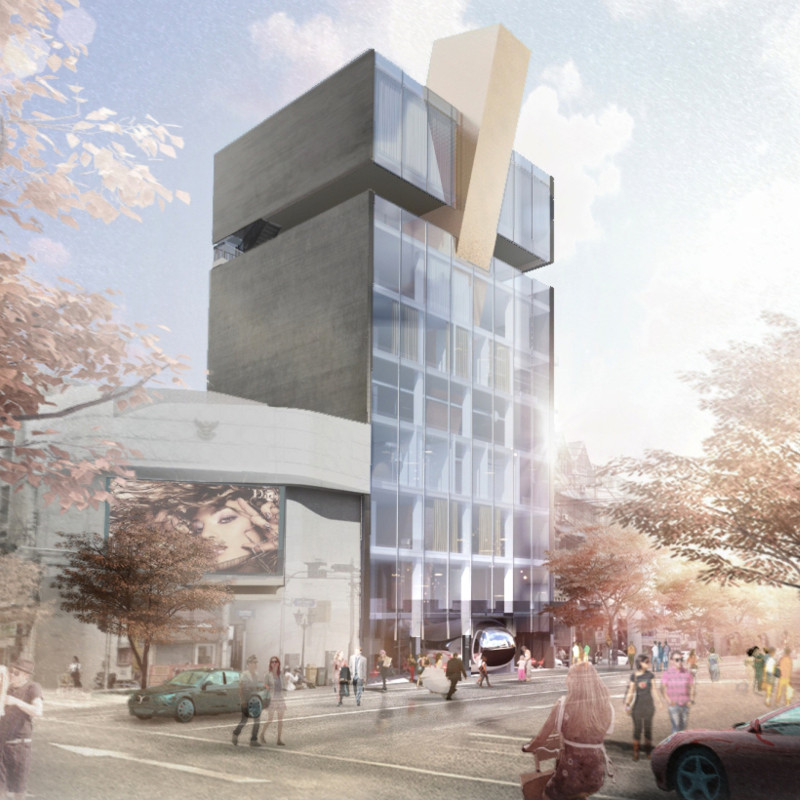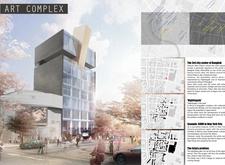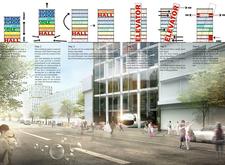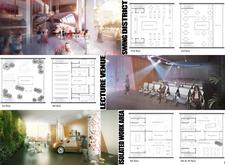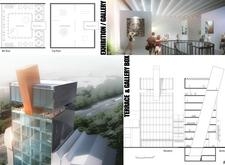5 key facts about this project
Functionally, the Art Complex is designed to serve multiple purposes, adapting to the evolving needs of its users. Ground-level spaces are open and accessible, designed to invite the public in and create a sense of community ownership. These areas include exhibition zones that showcase local and international artwork, allowing for both formal and informal interactions. As visitors move through these spaces, they engage with the arts in a setting that encourages exploration and participation.
The design incorporates the concept of transparency through extensive use of glass, which allows natural light to flood the interior. This choice is integral not only for visual appeal but also for creating an inviting atmosphere that enhances the visitor experience. The glass facade also offers views of the surrounding urban environment, establishing a connection between the interior of the complex and the vibrant city of Bangkok. Alongside the transparent elements, sturdy concrete and steel are used to create a solid structural framework that supports the complex’s ambitious design approach.
Unique design strategies are evident throughout the project. The building features a series of terraces that allow for green spaces, promoting sustainability and providing areas for relaxation and informal gatherings. This integration of biophilic design enhances the environmental performance of the architecture while contributing to the mental well-being of visitors. The interplay between indoor and outdoor spaces fosters a seamless transition, encouraging users to interact not just with the built environment but also with nature.
Inside, specific zones are thoughtfully organized to support various artistic activities. Studios and workshop spaces are strategically placed to encourage collaboration among artists, providing areas that can be adapted to different disciplines. Lecture venues equipped with modern technology provide essential resources for education and discussion, reinforcing the complex’s role as a learning environment as well as a creative incubator.
Key architectural elements are highlighted by a deliberate attention to detail. Textured wood finishes in interior spaces create warmth and contrast against the sleekness of concrete and glass. This choice not only enhances aesthetic quality but also helps to acoustically manage sound, creating a conducive atmosphere for creativity. The careful selection of materials supports both functional requirements and visual harmony, ensuring that each component serves a purpose while contributing to an overall cohesive design.
In summary, the Art Complex in Bangkok exemplifies how thoughtful architecture can create valuable cultural spaces that foster community interaction and artistic exploration. By examining the architectural plans, sections, and designs, one can appreciate the careful thought put into each aspect of this project. Beyond serving as a mere venue for art, this complex is envisioned as a flourishing environment for creativity and collaboration. For those interested in the interplay of architecture and the arts, the project presentation offers an opportunity for a deeper look into its architectural ideas and functional schemes. Exploring these elements will provide additional insights into how this design aims to shape the urban landscape of Bangkok and its cultural identity.


